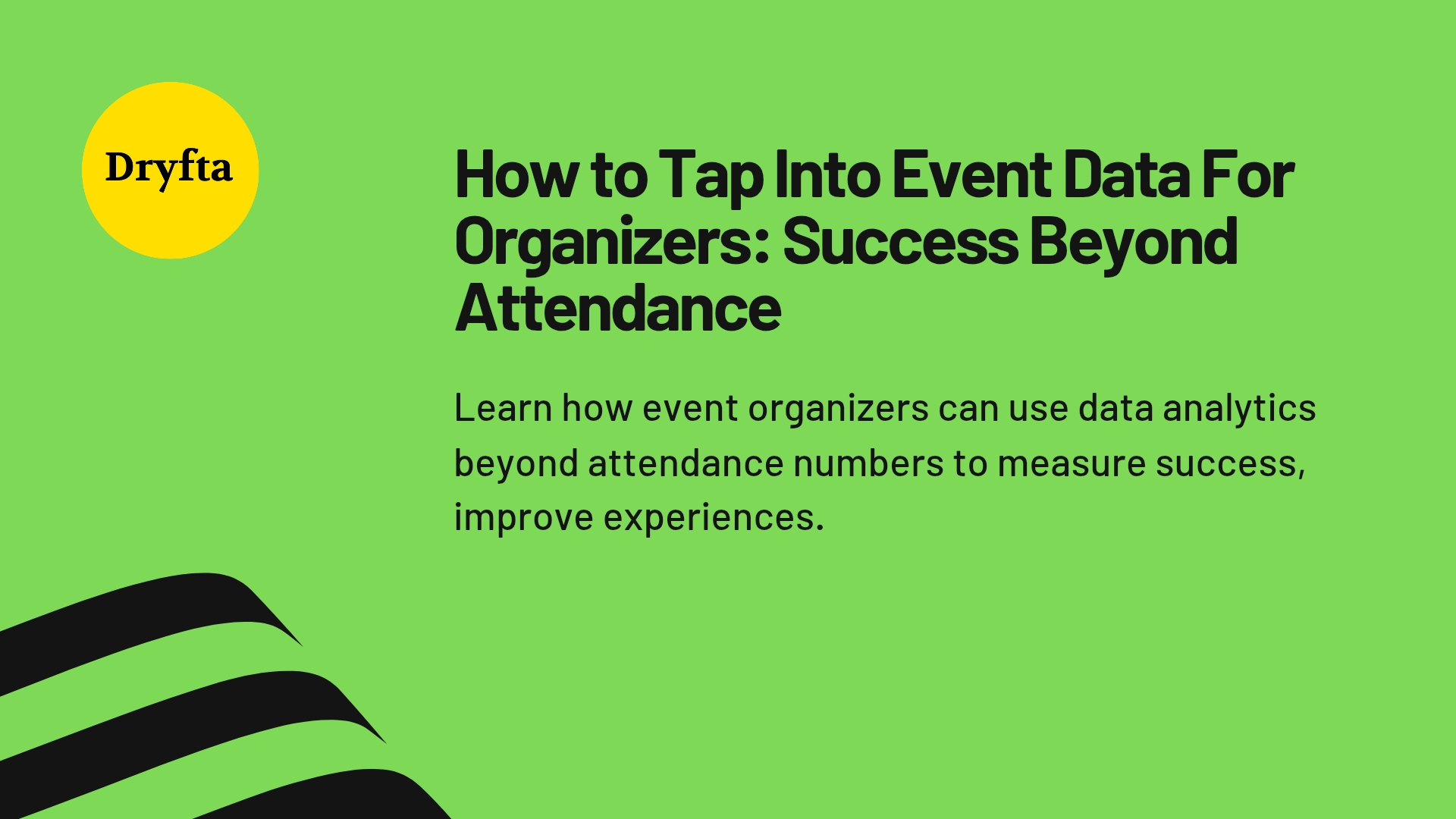
For most event organizers, one number that truly matters is the number of attendees at the event. The most important metric for the success of any event is the number of people in attendance. As an event manager, your joy must be through the roof as registration numbers climb, but when they don’t go as planned, panic sets in.
While attendance is certainly key in organizing an event, it is important to acknowledge the fact that it doesn’t equate to your event’s success. We should also consider factors whether attendees found value, sponsors achieved their goals and your event set your organization’s mission running.
The answer to these questions already exists in the form of data. All you need to know is how to measure and how to interpret it.
Why Attendance Numbers Mislead
Attendance seems like an objective measure of success, but more people don’t automatically mean a better event. High attendance with low engagement often indicates less success than modest attendance with deep engagement. This is why focusing solely on headcount can be misleading.
People register for many reasons that have nothing to do with your actual program like needing to escape their daily grind and learn something new. Some register but never show up, which means your attendance figure doesn’t even accurately reflect who actually experienced your event.
Attendance Ignores the Quality of the Experience
A hundred active and satisfied attendees who return yearly and recommend your event create more value than five hundred people who attend once and never come back. Registration data shows you patterns that simpler attendance counts miss.
You can track interest in your event over time by planning registrations by week or month leading up to your event. In doing so, you’ll see when marketing campaigns drive action, when interest declines.
Analyze Registration by Source
To understand whether people found you through email, social media, partner promotion, or organic search, one will have to measure the sources they come from. This is an important way to determine where your attendees are coming from. By narrowing down on a few acquisition channels, you can invest marketing budget more effectively by doubling down on what works and cutting back on what doesn’t bring you results.
Study pricing tier distribution to see if your value proposition matches your pricing strategy. If everyone buys the cheapest ticket, your premium tiers might not offer enough value, while if no one uses discount codes, you might not need them.
Platforms like Dryfta provide detailed registration analytics showing conversion rates, popular ticket types and registration patterns, which help you augment your strategy continuously rather than guessing what might work.
Engagement Metrics That Matter
Engagement shows you whether attendees actively participate or passively occupy space and higher engagement often correlates with satisfaction, learning and a likelihood to return. Track session attendance across your program to learn which topics draw crowds and which sessions have empty seats. These patterns tell you what your audience truly cares about as opposed to what event coordinators think they should care about.
Attendee Satisfaction and Feedback
Direct feedback from attendees provides context that numbers alone can’t offer. When attendees share quantitative ratings with qualitative comments, it highlights the complete picture of the attendee experience.
Survey attendees immediately after the event, while memories are fresh, since waiting a week causes response rates to plummet. Send surveys within 24-48 hours of your event ending.
Keep these surveys short and focused because 10 well-chosen questions generate better data than 30 questions that exhaust respondents. Use a consistent rating scale across questions to make analysis easier.
Speaker and Session Performance
Speaker quality significantly affects overall event success, so measuring individual session performance helps you identify great speakers to invite back and topics that resonate with your audience.
Collect session-level feedback, not just overall event ratings, by asking attendees to rate each session they attended. Compare attendance numbers to session ratings to discover hidden gems and overrated sessions. Sometimes poorly attended sessions receive the highest satisfaction scores and deserve better promotion or time slots next year.
Sponsor and Exhibitor ROI
Sponsors fund many events, but organizers often struggle to prove value. Measuring sponsor results helps you retain supporters and attract new ones with concrete ROI data that justifies their investment.
Track booth traffic for exhibitors by counting how many people visited each booth, how long they stayed and whether they scanned badges or exchanged contact information.
Follow up with sponsors after the event to assess their satisfaction.
Did they achieve their goals?
What would increase their ROI?
Financial Performance Indicators
Financial metrics are central to understanding whether or not your event operates sustainably. Calculate cost per attendee by dividing total event costs by attendance to understand your per-person investment.
Monitor revenue by source to understand how much comes from registrations versus sponsorships, versus exhibitor fees. Diversifying revenue streams reduces risk. Measure sponsorship renewal rates to see what percentage of sponsors return year after year. High renewal rates indicate satisfied sponsors receiving good value.
Longer Term Impact Measures
Sometimes, it is better to keep long-term prospects in mind when measuring an event’s success. The benefits and the pros of certain trends of an event come in slowly over time as opposed to becoming immediately evident. Therefore, it is important for organizers to make note of their retention rates over a year to see what percentage of attendees return for subsequent events.
Higher retention means continued value for those in attendance. A declining retention tells you you’re not meeting the needs of your audiences.
Know How To Use Your Data
With so many possible metrics now available in the market, a whole new challenge has crept up on organizers. Formerly, managers were confused about how they could track the productivity of their events. Fast forward to today, and the question is about what tool to use. Knowing what to actually track is the first step here.
Choose 5-10 key performance indicators that directly appeal to your organization’s goals. Choose metrics that truly show whether you’re succeeding and ignore vanity metrics that look impressive but don’t connect to actual success. Be realistic and set only achievable targets for each of these metrics on the basis of past performance and incremental improvement.
Parting thoughts
Collecting tons of data means nothing if you don’t use it to improve your forthcoming events. Identify your biggest opportunities and scope for improvement based on the data rather than trying to fix everything at once. If you are an event manager hoping to step up your game for the rest of 2025 and truly understand your event’s success beyond just attendance, then we have a tool you may find useful.
Dryfta’s event management software lets you track engagement, satisfaction, sponsor ROI and long-term impact in one place and our mobile event app is now helping many managers plan their events smarter and deliver more value every time.




